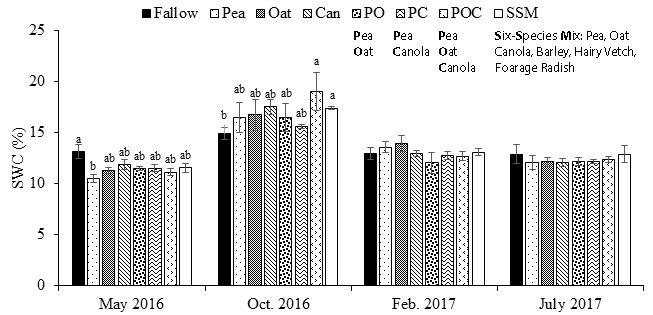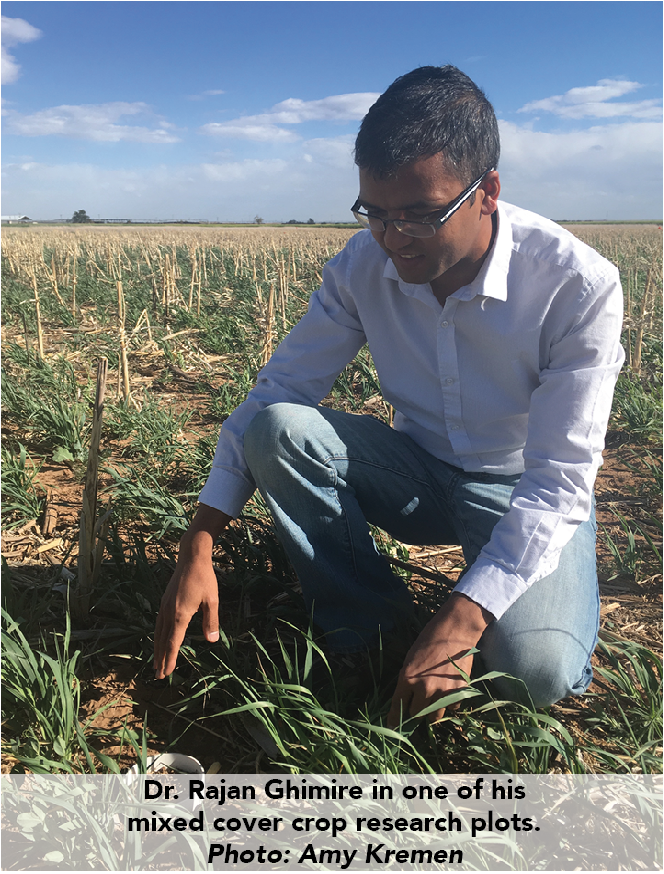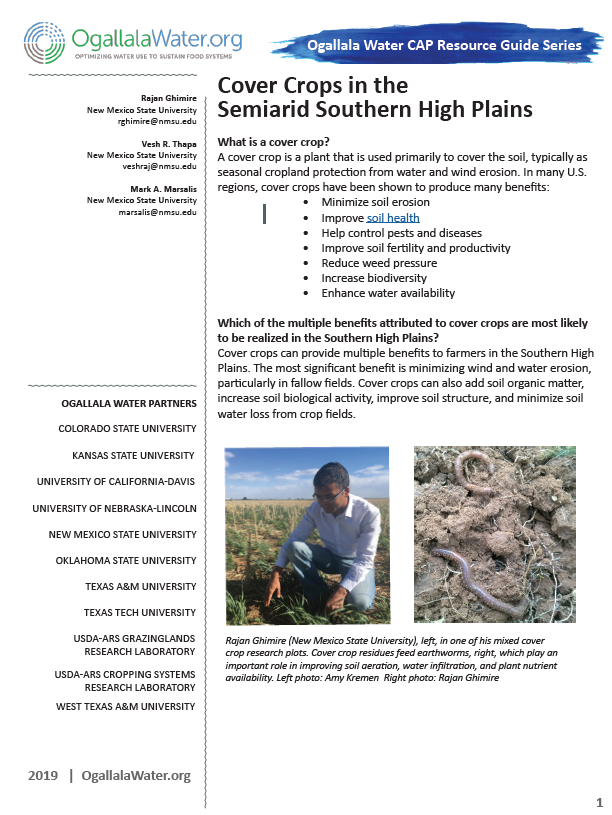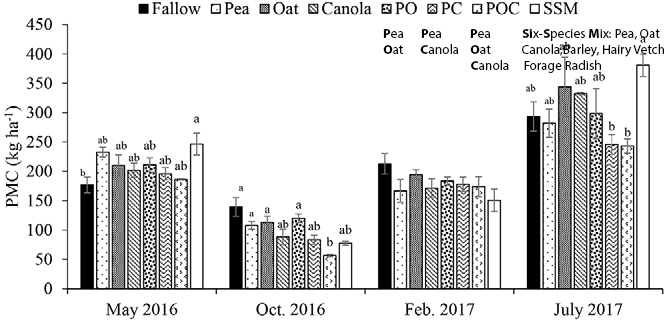Using cover crops has been shown to produce many benefits in various regions across the U.S. In the Southern High Plains, the most significant potential benefit of using cover crops may be to minimize wind and water erosion, particularly in fallow fields. Other benefits of using cover crops may also include increasing soil organic matter and soil biological activity, improving soil structure, and minimizing soil water loss from crop fields in this semiarid region.
Is using cover crops feasible for semiarid regions?
Water lost through evapotranspiration in the Southern High Plains is extensive, leading to very low water conservation efficiency. Success with integrating cover crops into rotations in this region depends on factoring in some key considerations:
- Cover crops use soil moisture for their growth and can affect the subsequent crop yield. Careful planning of planting and termination time, species selection, and management can minimize water loss while providing multiple benefits to the soil.
- Combining cover cropping with minimum-till or no-till management can improve water conservation efficiency and provide other benefits, such as erosion control.
- Properly managed cover crops can improve soil organic matter storage, increase nutrient cycling, and soil water conservation, which in the long term can provide multiple environmental benefits without adverse effects on crop yields.
- It may take two or more years of cover cropping to see significant soil health benefits.
Success with cover cropping in the semiarid Southern High Plains depends on species selection, planting and termination time, and crop rotation. Striking a delicate balance of short and long-term goals related to water use, nutrient cycling, and yields is critical.
Research Highlights
A New Mexico State University cover crop study conducted at the Agricultural Science Center at Clovis, NM, produced the following results.
1. Dryland corn-sorghum rotation:
- Cooler soil temperature in a no-tilled cover cropped field than a conventionally tilled no-cover cropped field.
- More soil organic matter accumulated in strip-tilled and no-tilled plots with cover crops than conventionally tilled no-cover cropped field.
- Improved soil aggregates and wet aggregate stability, which means soils are less prone to wind and water erosion, in cover crops.
- Reduced soil moisture in cover crops, but crop yield was still comparable to no-cover cropped fields.
2. Integrating cover crops into a winter wheat-fallow rotation with limited irrigation:
- Cooler soil and surface air temperature in cover crop fields than a summer fallow field. Cooler soil temperature was associated with greater ground cover.
- Increased weed suppression with cover crops. Greater ground cover was associated with better weed suppression.
- Higher nutrient utilization and faster recycling with brassica species cover crops than other cover crops.
- Increased microbial diversity with more diverse cover crops species in the mixture.
- Improved soil aggregation and aggregate stability with cover crops than fields without cover crops.
Soil moisture and soil nitrogen contents were significantly less under cover crops than under fallow fields at the time of cover crop termination, but moisture loss was recovered at the time of winter wheat planting (Figure 1a). Nitrogen recovery occurred within three to six months, depending on cover crop species. However, labile soil organic matter measured as potentially mineralizable carbon (PMC) content was higher in cover cropped fields than fallow fields (Figure 1b). The yield of the following cash crop was not significantly different between cover cropped and fallow fields.
Figure 1a)

Figure 1b)
Soil water content percentage, SWC %, (upper) and potentially mineralizable carbon, PMC, (lower) at different sampling dates after cover crop termination in a limited irrigation cover-crop winter wheat rotation.
Another cover crop study (2016-2017) conducted in Clovis, NM found that breaking a long fallow period with short-season cover crops could be a good strategy to improve soil health and improve the resilience of winter wheat-based crop rotations in the Southern High Plains.
- Results from this 2-yr study reveal a positive influence of cover crops (oat and its mixture with other species) on soil organic carbon and soil total nitrogen in a winter-wheat based cropping system with minium impacts on soil water content.
- Though soil water content was lower with cover crops than the fallow treatment at cover crop termination, soil water content at winter wheat planting was not different among treatments.
- Winter wheat yield was not impacted by cover crop treatments in both study years.
Ghimire, R., B. Ghimire, A.O. Mesbah, U. Sainju, and O.J. Idowu (2019). Cover crop effects on soil organic matter and nutrient dynamics in a winter wheat-summer fallow system. Agronomy Journal, 111: 21008-2115..
How do cover crops affect profitability in the Southern High Plains?
A 2019 study examined the impact of integrating cover crops in winter wheat (Triticum aestivum L)-based rotations on farm profitability and risk in the Southern High Plains.
The results showed that, due to the extra monetary costs involved, none of the cover crop options is economically viable. However, when secondary benefts (soil erosion and green nitrogen) or government subsidies ($50/ac) are included, a pea cover crop dominates the fallow alternative. Moreover, when secondary benefits and government subsidies are combined, two cover crop options (pea and oats) emerge as more profitable alternatives than leaving the land fallow.




